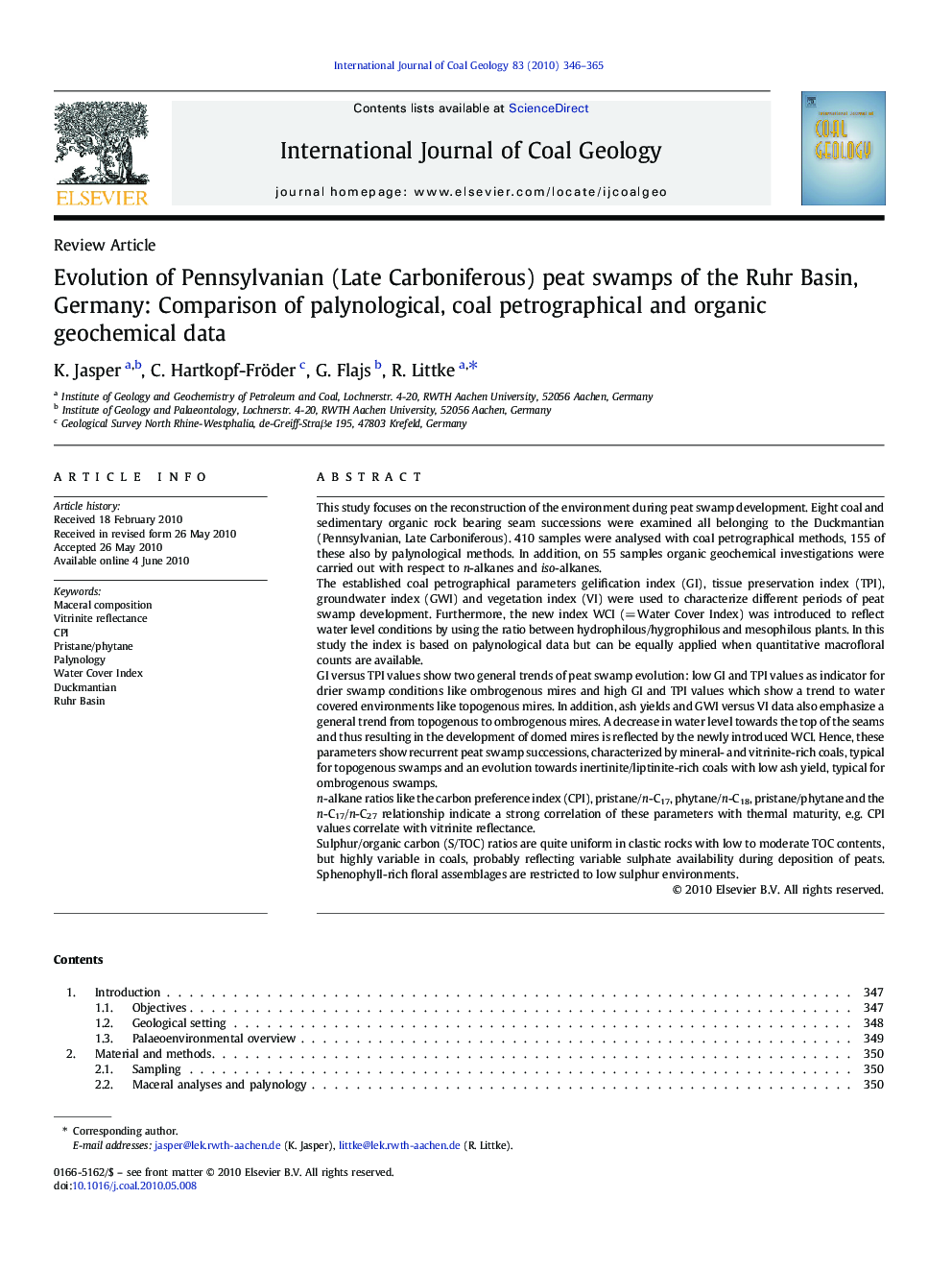| کد مقاله | کد نشریه | سال انتشار | مقاله انگلیسی | نسخه تمام متن |
|---|---|---|---|---|
| 1753735 | 1522619 | 2010 | 20 صفحه PDF | دانلود رایگان |

This study focuses on the reconstruction of the environment during peat swamp development. Eight coal and sedimentary organic rock bearing seam successions were examined all belonging to the Duckmantian (Pennsylvanian, Late Carboniferous). 410 samples were analysed with coal petrographical methods, 155 of these also by palynological methods. In addition, on 55 samples organic geochemical investigations were carried out with respect to n-alkanes and iso-alkanes.The established coal petrographical parameters gelification index (GI), tissue preservation index (TPI), groundwater index (GWI) and vegetation index (VI) were used to characterize different periods of peat swamp development. Furthermore, the new index WCI (= Water Cover Index) was introduced to reflect water level conditions by using the ratio between hydrophilous/hygrophilous and mesophilous plants. In this study the index is based on palynological data but can be equally applied when quantitative macrofloral counts are available.GI versus TPI values show two general trends of peat swamp evolution: low GI and TPI values as indicator for drier swamp conditions like ombrogenous mires and high GI and TPI values which show a trend to water covered environments like topogenous mires. In addition, ash yields and GWI versus VI data also emphasize a general trend from topogenous to ombrogenous mires. A decrease in water level towards the top of the seams and thus resulting in the development of domed mires is reflected by the newly introduced WCI. Hence, these parameters show recurrent peat swamp successions, characterized by mineral- and vitrinite-rich coals, typical for topogenous swamps and an evolution towards inertinite/liptinite-rich coals with low ash yield, typical for ombrogenous swamps.n-alkane ratios like the carbon preference index (CPI), pristane/n-C17, phytane/n-C18, pristane/phytane and the n-C17/n-C27 relationship indicate a strong correlation of these parameters with thermal maturity, e.g. CPI values correlate with vitrinite reflectance.Sulphur/organic carbon (S/TOC) ratios are quite uniform in clastic rocks with low to moderate TOC contents, but highly variable in coals, probably reflecting variable sulphate availability during deposition of peats. Sphenophyll-rich floral assemblages are restricted to low sulphur environments.
Journal: International Journal of Coal Geology - Volume 83, Issue 4, 1 September 2010, Pages 346–365